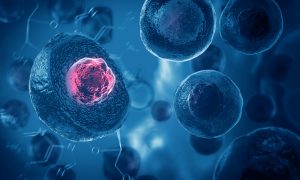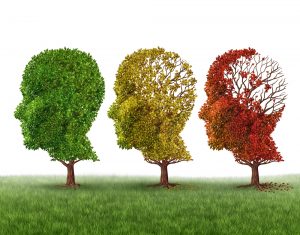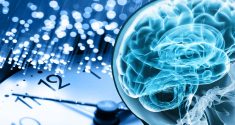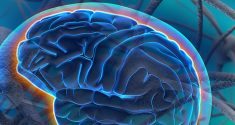Some areas of the adult brain contain dormant or dormant neural stem cells that can potentially be reactivated to form new neurons. However, the transition from quiescence to proliferation is still poorly understood. A team led by scientists from the Universities of Geneva (UNIGE) and Lausanne (UNIL) has discovered the importance of cellular metabolism in this process and how these neural stem cells can be awakened and reactivated. Biologists have succeeded in increasing the number of new neurons in the brains of adult and even older mice. These results, which show promise for the treatment of neurodegenerative diseases, were published in the journal Science Advances.
Loss of Neural Stem Cells in Old Age Impairs Learning and Memory Processes
Stem cells have the unique ability to continually make copies of themselves, giving rise to differentiated cells with more specialized functions. Neural stem cells (NSCs) are responsible for building the brain during embryonic development and generate all cells of the central nervous system, including neurons.
 Surprisingly, NSCs persist in certain brain regions even after the brain is fully formed and can form new neurons throughout life. This biological phenomenon, called adult neurogenesis, is important for certain functions such as learning and memory processes. In the adult brain, however, these stem cells become quieter or “dormant,” reducing their ability to renew and differentiate. As a result, neurogenesis decreases markedly with age. The laboratories of Jean-Claude Martinou, Professor Emeritus in the Department of Molecular and Cellular Biology at UNIGE Faculty of Science, and Marlen Knobloch, Associate Professor in the Department of Biomedical Sciences at UNIL Faculty of Biology and Medicine, have a metabolic mechanism revealed, which allows adult NPCs to come out of their dormant state and become active.
Surprisingly, NSCs persist in certain brain regions even after the brain is fully formed and can form new neurons throughout life. This biological phenomenon, called adult neurogenesis, is important for certain functions such as learning and memory processes. In the adult brain, however, these stem cells become quieter or “dormant,” reducing their ability to renew and differentiate. As a result, neurogenesis decreases markedly with age. The laboratories of Jean-Claude Martinou, Professor Emeritus in the Department of Molecular and Cellular Biology at UNIGE Faculty of Science, and Marlen Knobloch, Associate Professor in the Department of Biomedical Sciences at UNIL Faculty of Biology and Medicine, have a metabolic mechanism revealed, which allows adult NPCs to come out of their dormant state and become active.
Activation of Neural Stem Cells Leads to the Formation of New Neurons in the Brain
The researchers found that mitochondria, the energy-producing organelles in cells, are involved in regulating the activation level of adult NSCs. The mitochondrial pyruvate transporter (MPC), a protein complex that was discovered eleven years ago, plays a special role in this regulation. Its activity affects the metabolic options that a cell can utilize. By knowing the metabolic pathways that distinguish active cells from dormant cells, scientists can wake up dormant cells by altering their mitochondrial metabolism.
Potential Treatment Options
Biologists have blocked MPC activity by using chemical inhibitors or by creating mutant mice for the Mpc1 gene. Using these pharmacological and genetic approaches, the scientists were able to activate dormant NSCs, thereby generating new neurons in the brains of adult and even aged mice. With this work, the researchers were able to show that the rerouting of metabolic pathways can directly affect the activity state of adult NSCs and thus the number of newly formed neurons. These results shed new light on the role of cellular metabolism in regulating neurogenesis. In the long term, these results could lead to potential treatments for conditions such as depression or neurodegenerative diseases.
Rejuvenate the Brain With Stem Cells
Previous research has shown that increasing the number of stem cells in the brain would help to restore cognitive functions such as learning and memory that are lost with age. To investigate this, scientists at the Center for Regenerative Therapies at TU Dresden (CRTD) used a laboratory-developed method to stimulate the small pool of brain neural stem cells located in the brain to increase their numbers and, also to increase the number of neurons produced by these stem cells. Surprisingly, more nerve cells were able to survive in the brains of old mice and establish new contacts with neighboring cells. The scientists then looked at an important cognitive ability that is lost with age, similar to that in mice and humans: Navigation.
It is well known that people learn to adapt to a new environment differently depending on whether they are young or old. At a young age, the brain can create and remember a cognitive map of the environment, but this ability diminishes in older brains. As an alternative solution to the problem, without a cognitive map of the environment, older brains must learn the fixed sequences of twists and turns needed to reach a specific goal. Although the two strategies may seem similar on the surface, only a cognitive map can enable people to navigate efficiently when they need to start from a new location or reach a new destination.
More Neurons Help to Slow the Aging Process in the Brain
Would increasing the number of neurons be enough to counteract the brain’s declining ability to navigate and slow down this aging process? The answer is yes: old mice with more stem cells and neurons regained their lost ability to map the environment and remembered it longer, making them more like young mice. Even better, when neural stem cells were stimulated in the brains of young mice, cognitive impairment was delayed and memory was better preserved throughout the animals’ natural lives.
In young people, an area of the brain called the hippocampus is crucial for remembering places and events, and also responsible for creating maps of new environments. However, old people use other structures that are more related to the development of habits. It was interesting to see that adding more neurons to the hippocampus of old mice allowed them to use strategies typical of young animals. It wasn’t just about how fast they learned, but how different the learning process itself was.
Humans also have a few stem cells in their brains, and these stem cells are known to decline rapidly over the course of life. Identifying the causes of cognitive deficits in old age and rescuing them is crucial in our rapidly aging society. The researchers were able to show that age-related impairments can be counteracted by depriving the brain of its endogenous neurogenic potential, thereby rejuvenating its function.








